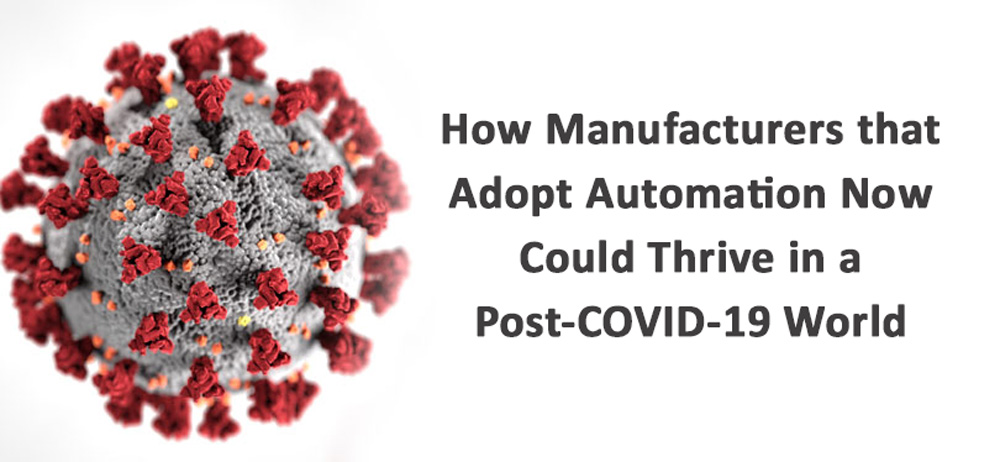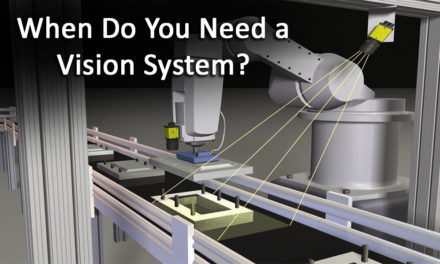
Introduction:
As recently as a few years ago it seemed that labor savings was the driving factor in leading manufacturers to investigate automation. Return on investment was largely calculated by the number of people that the automation would replace. And if that ROI was less than a few years, automation projects were often greenlit. More recently however, we started seeing that labor scarcity was quickly becoming more of a motivating factor for manufacturers to consider automation. The lack of available workers was preventing some manufacturers from scaling production or keeping up with ever changing customer demand. The COVID-19 outbreak has shone a bright light on some of the dreadfully out-of-date, manual manufacturing practices that will prevent so many companies from recovering quickly when restrictions are lifted.
Help Wanted:
Suppose a large, distribution warehouse opens down the road from a manufacturer. They need to hire 500 workers to get up and running quickly. To fill those jobs are offering higher pay, full benefits and paid vacation because business is booming. If you were working at the manufacturer doing tedious, repetitive work would you remain at that job? Or would you go to the new, bright, clean warehouse down? True, the work may not be any less mundane. But you are compensated better and there is a perceived “cool” factor to your employment there.
This is happening to manufacturers all over America. And not just those located in rural areas where labor is scarce but also in major metropolitan areas as factory workers are looking for better opportunities. This situation leaves the manufacturers in a constant cycle of hiring and training only to have the best employees leave to better work elsewhere.
This has been the reality for most manufacturers for the last few years. A 2018 study by Deloitte revealed that 2.4 million manufacturing positions will go unfilled between 2018-2028 as a result of the skills gap. When you couple the added complexity of manufacturing while adhering to social distancing guidelines, manufacturers are left with an almost impossible task of growing their businesses while relying heavily on humans to perform the work.
Role of Automation:
Today’s automation and robotic technologies are still limited in their ability. There are simply many, many tasks that people are better suited to perform. Manufacturers need to focus their human talent on those jobs or tasks that require critical thinking, complex manipulation or a personal touch.
Amazon’s e-commerce fulfillment centers are a terrific example of a how a company has leveraged technology to perform trivial tasks and the result has been explosive sales and employment growth. According to reports they have deployed over 200,000 robots in their distribution centers while adding over 300,000 jobs to meet demand. Mobile robots move across their distribution center like an army of ants operating in concert bringing goods to employees that verify the products and place them into boxes for fulfil orders.
Here are the most common applications manufacturers are automating today. The tasks are broken down by the technology that enables the automation and is followed by the benefit to the manufacturer.
Machine Vision:
Product Inspection – Preventing defective product from reaching customers
Packaging Inspection – Ensuring product quality, quantity and accuracy prior to shipment
Barcode reading – Providing tracking and traceability information for compliance or recalls
Machine Tending – Reducing repetitive loading and unloading of product into machines
Packaging – Reducing labor cost associated with placing product in cases or cartons
Palletizing – Reducing workplace injuries from repetitive handling of heavy boxes or cases
Goods to line delivery – Enabling just in time delivery of goods to the line without human labor
Intralogistics of raw materials and finished goods – Increased safety and lower labor cost by reducing fork truck traffic
Automation Trends:
If you haven’t been paying attention, in the last few years a lot of things have been changing for both automation providers and automation users alike. Let’s take a quick look at some of the trends that are pointing towards the likelihood that further adoption of automation is on the horizon.
For Manufacturers:
- Labor shortages
- Increased reliance on overseas suppliers
- Desired agilty to produce customized products and to scale production up and down quickly
- Increase of low volume, high mix production
- Increased expectations for product quality
- Desire for manufacturing to occur as close to the customer as possible (onshoring)
- Establishment of Industry 4.0 and IIoT initiatives to deliver real time data to the cloud
For Automation providers:
- Increased technology capabilities while prices of those technologies has dropped
- Advances in sensors, AI and machine learning that has opened new potential applications
- Flexible COTS items with improved ease of use that allows automation deployments in weeks
- Additive manufacturing allows quick prototyping that reduces project risk
- The proliferation of Robots-as-a-service (RaaS) and other finance models that reduce upfront investment
- Open communication standards that unlock machine to machine connectivity eliminating islands of information
Complications for automation adoption post-COVID-19:
In recent weeks, essential manufacturers have experienced significant workforce backlash as a result of potentially dangerous work environments as a result of a lack of safety supplies and manufacturing processes that are designed around close human interaction.
Without significant changes to the configuration of production lines, manufacturers will be facing a significant challenge to produce enough goods to meet demand while satisfying safety concerns of their employees.
Worker safety, combined with the strong headwinds of labor scarcity leads us to believe that COVID-19 will be an accelerant to increased adoption of automation technologies. Now is the time for everyone in the supply chain to evaluate and test new technologies that could eventually roll out company wide and fundamentally change how goods are produced and delivered. Even retailers like Walmart and Kroger have been testing robots in limited fashion for years and have plans to scale deployment in the coming years.
There will be a tidal wave of automation companies bringing robots and other technologies to market that will be designed to automating tasks that we hadn’t needed until the COVID-19 outbreak. For example, disinfecting areas of the plant floor where workers congregate.
In addition to new technology offerings, there will be many new applications for existing automation technologies. Could we seem more robots deployed in less industrial settings like retail and fast food. We suspect we will as they struggle with the same challenges of attracting low wage workers while abiding by social distancing guidelines.
Summary:
Work from home mandates, increased e-commerce activity and home delivery requests as a results of the COVID-19 pandemic calls for a critical review of all facets of manufacturing. Most notably it draws attention to the areas of robotics, supply chain and digital transformation. Automation will not solve all problems for manufacturers and other companies that seek to thrive in a post-COVID-19 world. We do not believe that widespread adoption of automation is the answer for all companies but do expect to see a steady replacement of monotonous, manual tasks with automation in the coming years where employers can redeploy skilled employees to tasks better suited for humans. Additional workers will be needed to manage and maintain the automation once it is deployed.
Automation technology will continue to drop in price and will become simpler to apply and simpler to support. So companies that wait for better, cheaper technology may find themselves years behind their competitors that are figuring out how to leverage automation today.
Author – Mark Proud
Proud Automation
www.ProudCo.com


